Classic and contemporary design meet in the Senate of Canada Building

This article is part of a series about the Senate of Canada’s move to its temporary home in the former Government Conference Centre. The Senate relocated to the former train station, built in 1912, while Parliament’s Centre Block — the Senate’s permanent home — is rehabilitated.
The Senate is expected to occupy its temporary location for at least 10 years.
Ottawa's former train station has been reborn as the temporary home of the Senate and many of its design features are worth a second look.
The restoration reintroduced the building's grand public spaces, including the intricately detailed general waiting room and concourse. The grand columns, windows and coffered ceilings are some of the original design features that are on display in the newly renovated landmark.
The 105-year-old building also boasts fresh features that evoke our country’s rich history. The intersection of existing historical finishes and contemporary design makes for a truly unique space in the nation’s capital.
THE CLOCK
The original train station clock, hanging above the entrance to the former ticketing block, was restored and has stood the test of time.
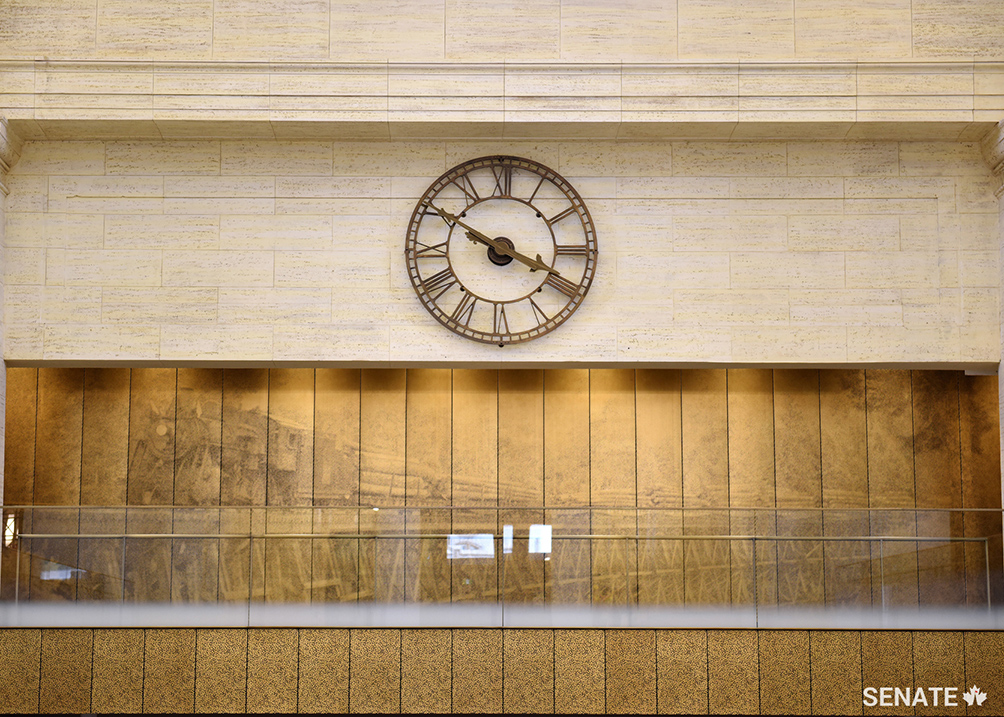
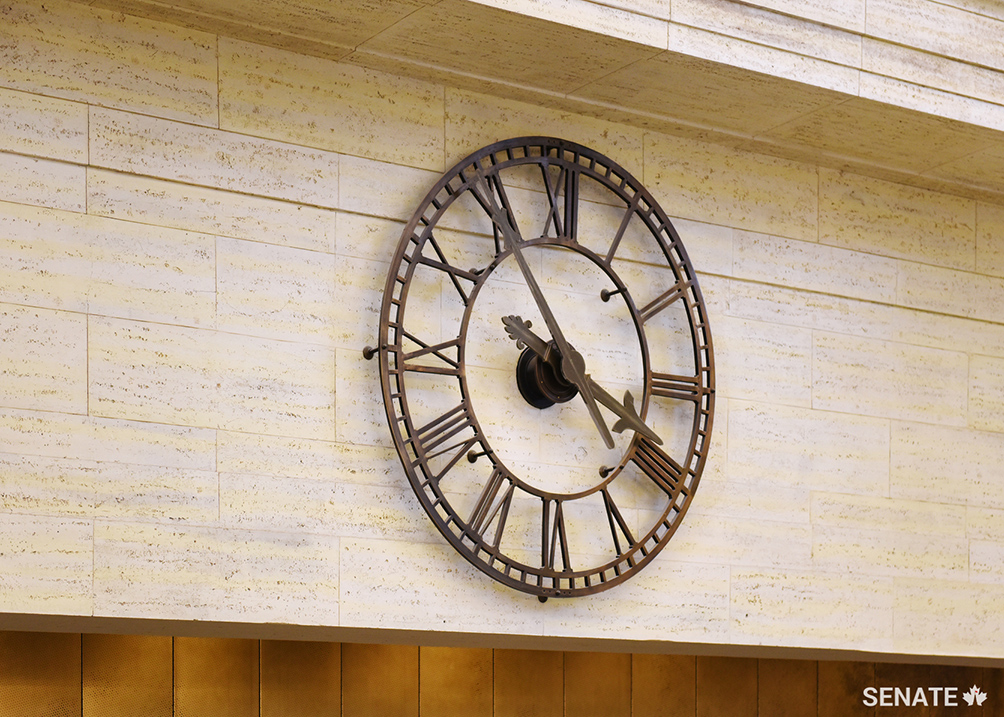
THE CEILING
The foyer to the temporary home of Canada's Senate has a heritage plaster ceiling that was rehabilitated from the building's days as Ottawa’s train station.
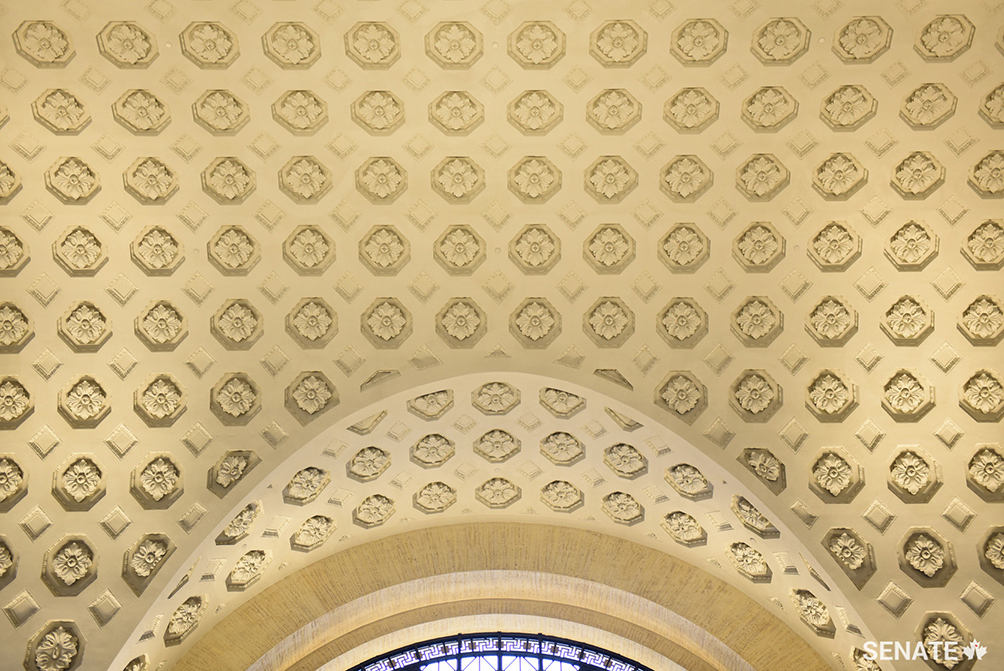
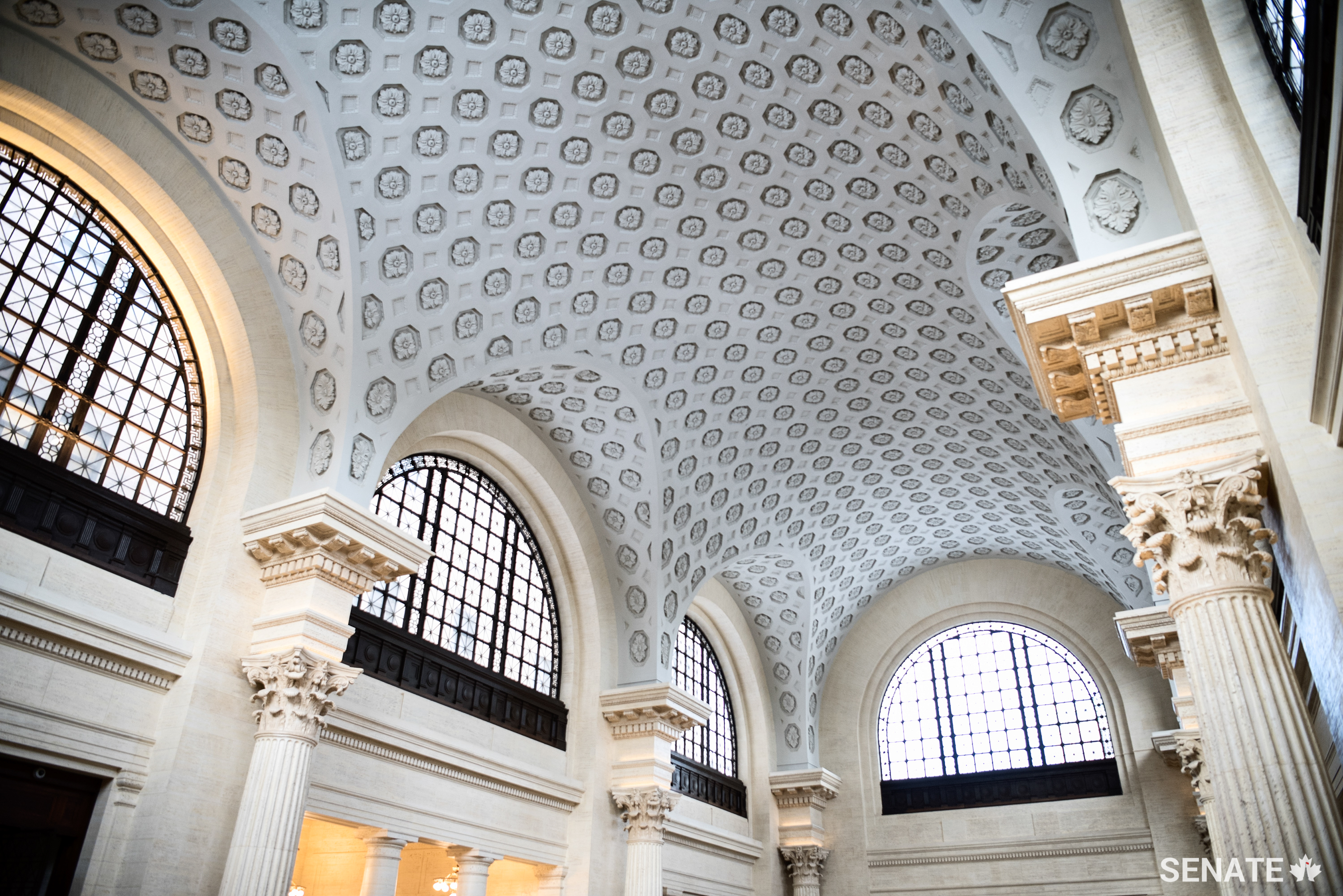
ANTECHAMBER DOORS
Walnut-wood doors open into the Senate Chamber. They are decorated with a pattern of maple leaves — a symbol of the country that Parliament serves. The doors were carved by machines at a workshop in Quebec’s Beauce region, south of Québec City.
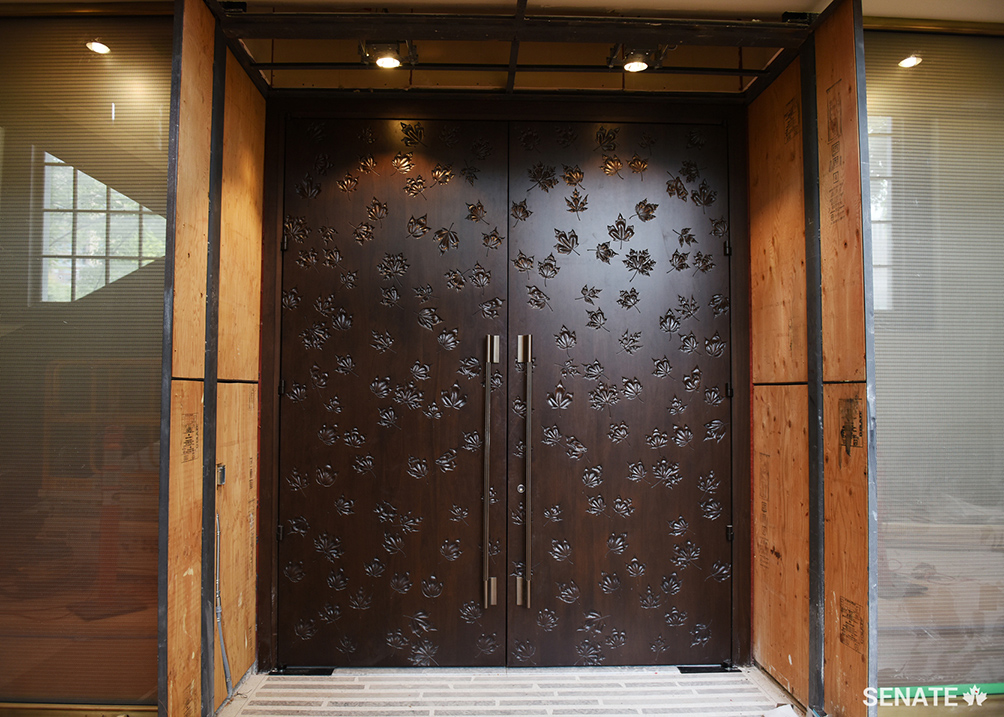
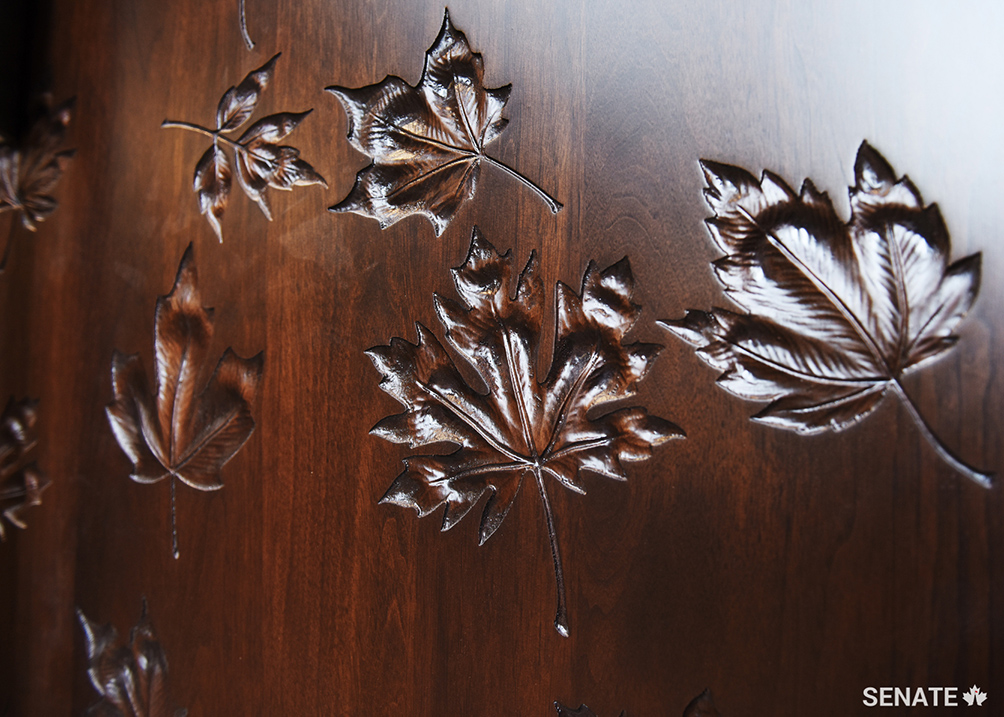
CARVED FLAGS
Carved Canada flag walnut-wood panels hang on the east wall of the Senate Chamber. The flags form a backdrop to the thrones in the new Senate Chamber. The curve and contour of the carvings give a sense of movement, as though the flags are fluttering in the wind.
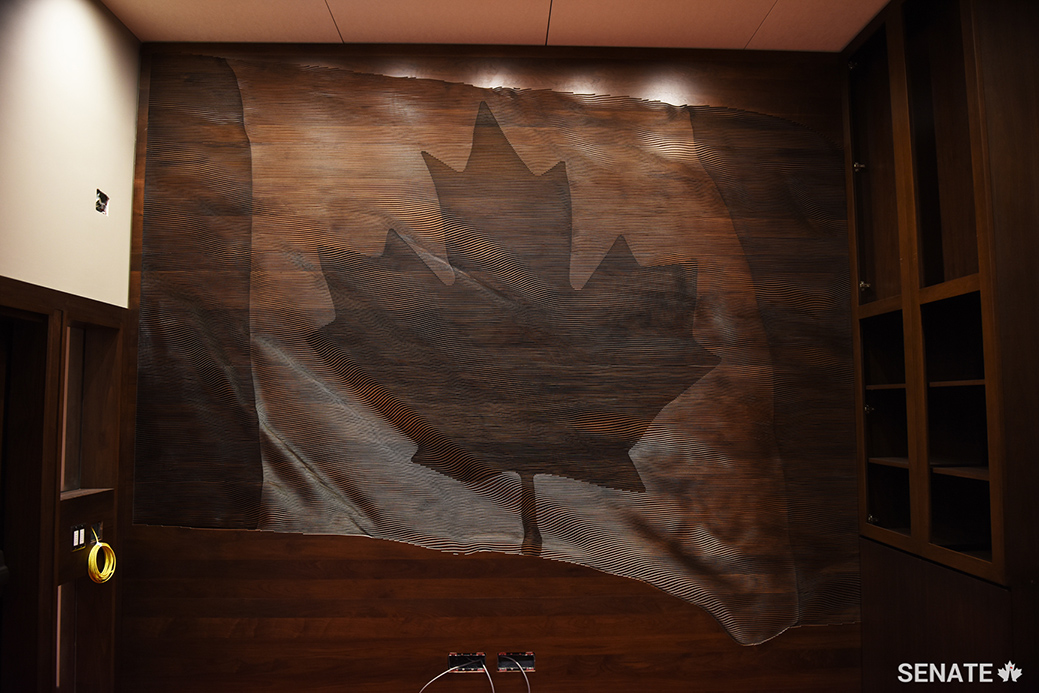
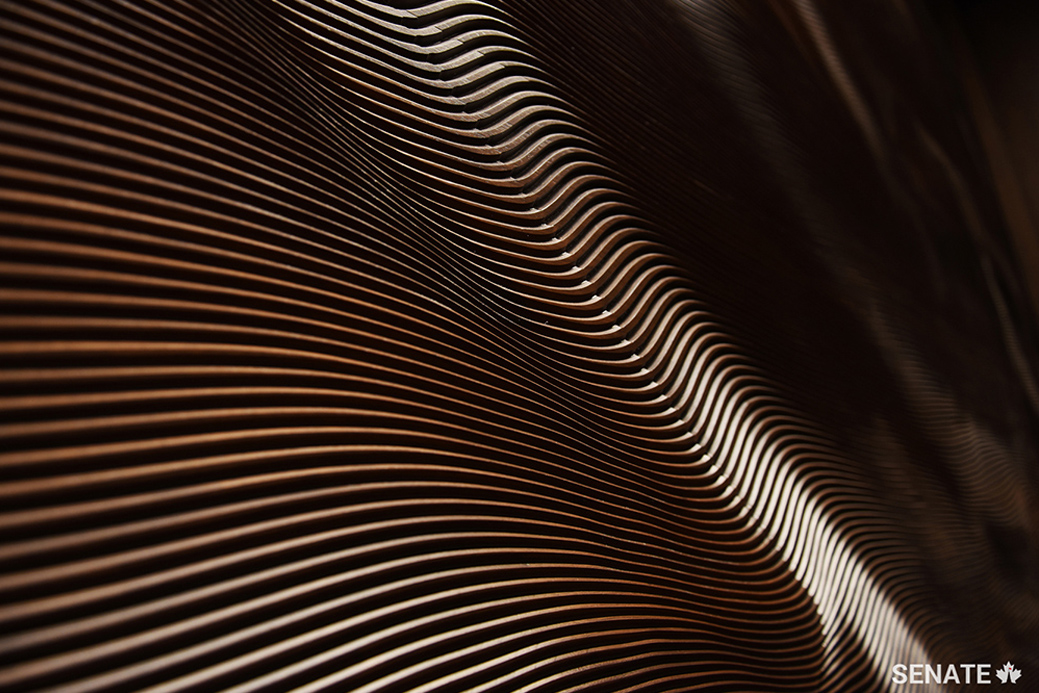
SENATE CHAMBER LEAF GLASS
The antechamber is separated from the Red Chamber by a translucent glass partition etched with different varieties of maple leaves.
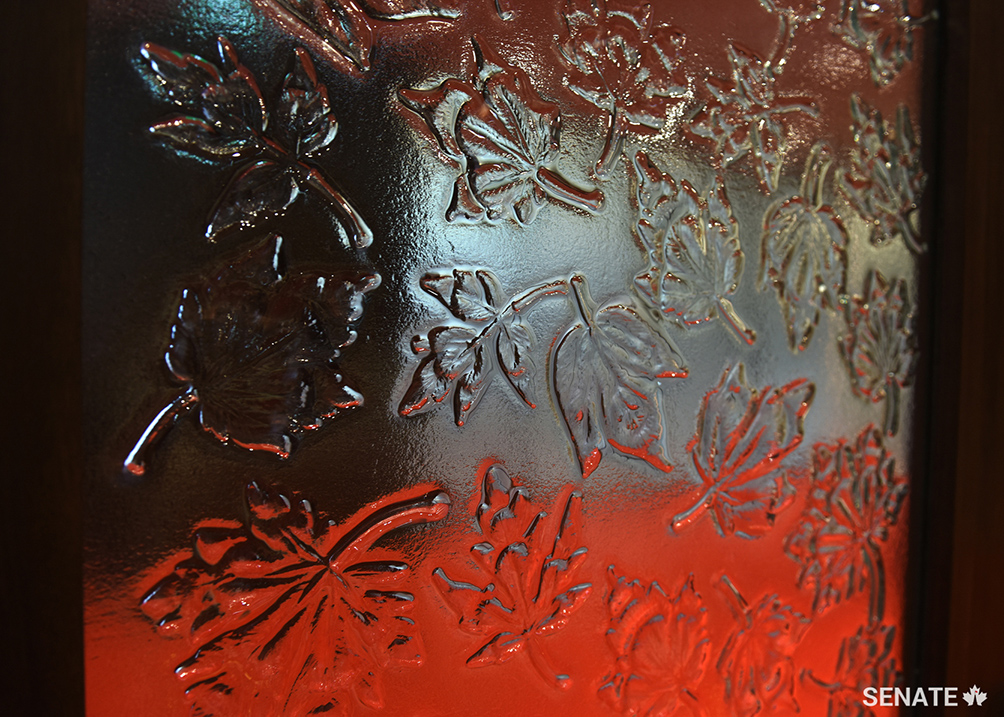
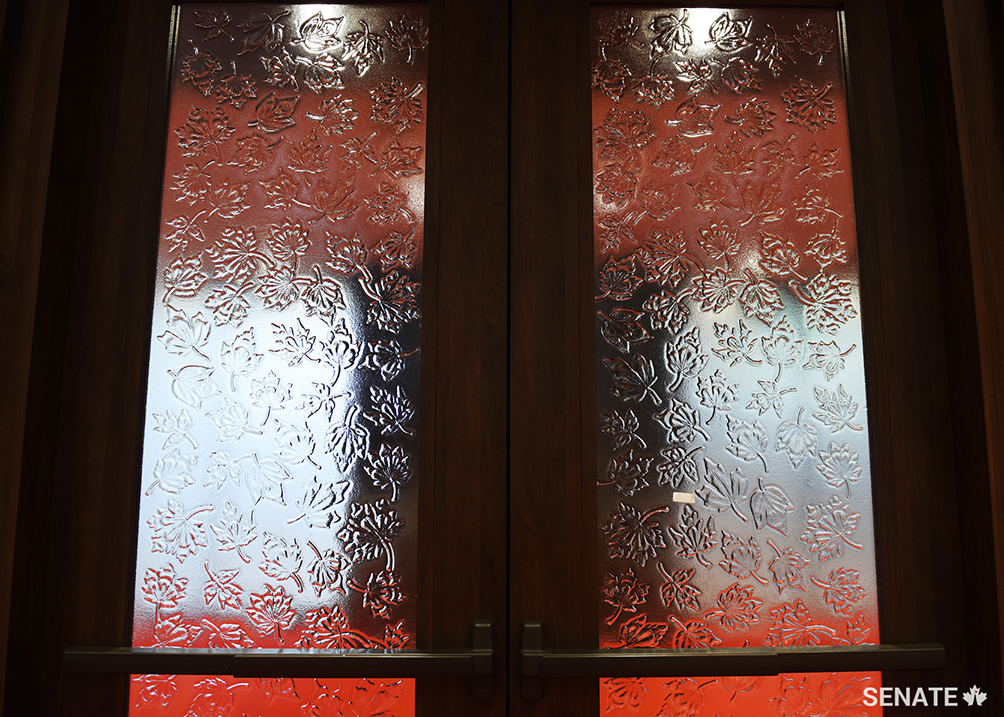
An earlier version of this article was published on September 28, 2018.
Although Centre Block was shuttered for rehabilitation work, Canadians can still experience its art and architecture through the Senate’s immersive virtual tour.


